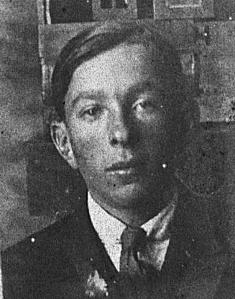New Quay is located on Cardigan Bay, about ten miles north-east of Cardigan. The town was rural until the building of its stone pier after 1835, when fishing and shipbuilding became commonplace. As a result, most of the male inhabitants of the town were mariners or employed in occupations linked with the sea. The men of the town who fell during both World Wars are commemorated on two memorials locally; the main memorial is situated within the Parish Church of St Llwchaiarn, and a matching pair of plaques which are affixed to the Memorial Hall (which do not tally accurately). Due to the fact that many of the men on the memorials were Merchant Mariners, many are not officially recognised as war dead by the CWGC, and as a result some cannot presently be identified. Many thanks to Mike Berrell for the photographs of all the local memorials.
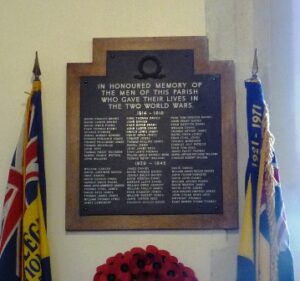
The Great War, 1914-1918
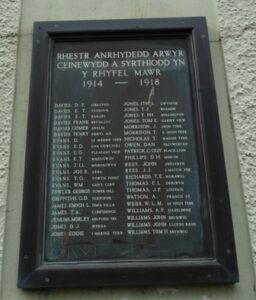
David Francis Davies, Private, 45419, Welsh Regiment. David, known as Frank, was the son of David and Ruth Davies, of Brynllys, New Quay. He enlisted at Maesteg into the Welsh Regiment, and was posted to France in 1916, joining the 2nd Battalion, Wknown as Frank, was born on 8 May 1889, the son of David Davies and Ruth Davies (nee Thomas), of Brynllys, New Quay. He worked as a stone mason prior to enlisting at Maesteg into the Welsh Regiment, and was posted to France in 1916, joining the 2nd Battalion, Welsh Regiment, which was attached to 3 Brigade, 1st Division. David probably joined the battalion on the Somme, where it had suffered heavy losses during the fighting for Bazentin Ridge and Pozieres. The Division had followed the German retreat to the Hindenburg Line in early 1917 and was then briefed for an operation on the Flanders Coast, being relieved at the end of May 1917 and by the middle of June had taken over their new positions on the coast. While the Division was holding the line near Coxyde, the Passchendaele offensive was launched on 31 July 1917, but had got bogged down, so at the beginning of November the Division was transferred to Ypres, to join the great push for Passchendaele Ridge. The Division took up positions near Valour Farm, on the lower edge of the ridge, by 9 November and prepared to launch an assault on the following morning. The objectives were a series of ruined farms which had been fortified by the Germans and at dawn on 10 November 1917 the Division launched its assault. The men arose from the trenches and began to advance through thick mud, but the men got caught up in their own artillery barrage and terrible casualties were suffered. Following the closure of the offensive, the 1st Division moved to the Éstaires area, where it became caught up during the heavy fighting which followed the launching of the German offensive on the Lys, Operation Georgette, on 9 April 1918. The 1st Division saw heavy fighting again, then spent the summer rebuilding before joining the great Allied offensive which was launched on 21 August 1918 and took part in the Battle of Drocourt-Queant, and at the Battle of Épehy. The Hindenburg Line was broken on 29 September and the Allies then drove on past the St. Quentin Canal. Frank was wounded during this great advance, and was evacuated to Rouen for treatment. He died of his wounds there on 23 October 1918. The 29-year-old is buried in St. Sever Cemetery Extension, Rouen, France.
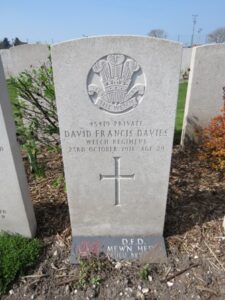
David Gomer Davies, Private, 44910, Welsh Regiment. David was the son of David and Anne Davies, of The Bungalow, New Quay. He enlisted at Cardiff into the Welsh Regiment, and was posted to France in 1916, joining the 2nd Battalion, Welsh Regiment, which was attached to 3 Brigade, 1st Division. David probably joined the battalion in time to take part in the Battle of the Somme. The Division followed the German retreat to the Hindenburg Line in early 1917, and moved to the Flanders Coast during the summer of 1917. After the Third Battle of Ypres had stuttered to a halt in the mud, the 1st Division was sent there, and fought at the Second Battle of Passchendaele. David was killed in action at Passchendaele on 17 November 1917, aged 31. He is buried at Poelcapelle British Cemetery, Belgium.
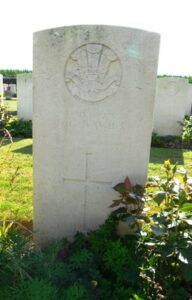
David Michael Davies, First Officer, Mercantile Marine. David was the son of Evan and Mary Davies, of River Cottage, New Quay. He was a long serving mariner, and had married Ellen Margaret Jones, the daughter of Anne Jones, of Cnwcfeillionen, Cross Inn, in 1906. The couple lived at Barry prior to the war, and David served aboard the steamship S.S. Arab, which had been registered in Shanghai. On 7 January 1918, Arab was on route from Cardiff to Messina with a cargo of coal, when she was torpedoed and sunk by the German submarine UB-50. David was among 21 men killed when she went down. He was 48 years old, and is commemorated on the Tower Hill Memorial, London. David does not appear to be commemorated locally.
Evan Thomas Davies, Private, 104359, Royal Army Medical Corps. Evan was born in 1888, the son of John Davies and Sarah Davies (nee James), of Cledlyn Villa, New Quay. He was initially raised by his grandfather at Gwastad Mawr, Llanllwchaiarn. Upon leaving school, Evan gained a place at Cardiff University where he began studying Theology. He then enlisted at Cardiff into the Royal Army Medical Corps on 20 October 1915 and was posted to the 19th Company, RAMC for training. Evan’s health began to break down over the coming months and after being diagnosed with tuberculosis, he was discharged from the army on 27 June 1916 and sent to Beechwood House Hospital at Newport. With his health ailing further, Evan was then sent to the West Wales Sanatorium, at Llanybydder, where he was treated for several months, before being sent home. Evan died at home at New Quay on 7 March 1917. The 28-year-old is buried in Maenygroes Independent Chapelyard. The photograph of Evan is courtesy of his nephew, Captain Irfon Jones.
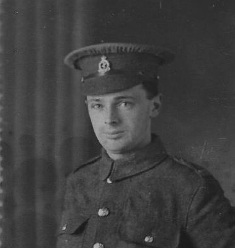
Evan Thomas Davies, Private, 44466, Welsh Regiment. Evan was the son of Magdalen Davies, of Rangel House, New Quay. He worked as a Draper at Neath prior to the war, and enlisted at Port Talbot into the Welsh Regiment. Evan was posted to France in 1916, joining the 9th Battalion, Welsh Regiment, which was attached to 58 Brigade, 19th (Western) Division. The Division moved to France during July 1915, and moved to positions near Loos, where it took part in the opening attack of the Battle of Loos on 25 September 1915. The following year the Division moved to the Somme, where it took part in the second wave of the attack on Ovillers-La Boiselle on 1 July, capturing the village at heavy cost. It then fought through the Somme Battles of Pozières and the Ancre in 1916. In 1917 the Division moved north to Ypres, taking part in the Battle of Messines, and at the later Battle of the Menin Road. Evan was killed during the advance to the eastern edges of Belgian and Hessian Woods on 20 September 1917. He was 26 years old, and is commemorated on the Tyne Cot Memorial, Belgium.
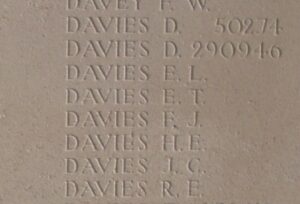
John Penry Davies, Private, 54123, Welsh Regiment. John was the son of Tom and Kate Davies, of Emrys House, New Quay. He enlisted at Cardigan into the 4th Battalion, Welsh Regiment, and had fought with the battalion at Gallipoli in August 1915, where it was attached to the 53rd (Welsh) Division. John was wounded at Gallipoli, and was invalided home. Upon recovery, he was posted to the 18th Battalion, Welsh Regiment, which was attached to 119 Brigade, 40th (Bantam) Division. The Division moved to France during the first week of June 1916, and moved to the front near Loos. Late in 1916 they moved south to the Somme, and fought at the Battle of the Ancre, and remained in the area over the winter. In March 1917 the Germans withdrew to their shortened line, called the Hindenburg Line, and the 40th Division were one of the Divisions that followed the withdrawal. John was wounded during the advance, and died of his wounds on 21 April 1917, aged 20. John is buried at Bray Military Cemetery, France.
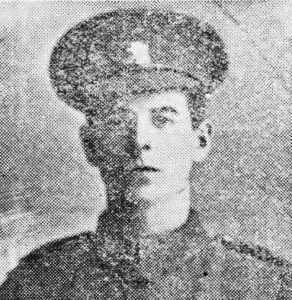
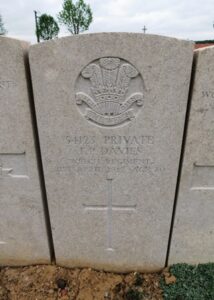
David Evans, Master, Mercantile Marine. David resided at 12, Marine Terrace, New Quay. He served with the Mercantile Marine, and was Master of the SS Auckland Castle. On 24 August 1918, she was on route from the Tyne with a cargo of coal, and was approaching the Farne Islands, when she was torpedoed and sunk by the German submarine UC-59, with the loss of twelve of her crew, including David. David is commemorated on the Tower Hill Memorial, London.
Evan David Evans, Mess Room Steward, Mercantile Marine. Evan was the son of Thomas John and Catherine Evans, of Lone Cnwcylili, New Quay. He served with the Mercantile Marine as a Mess Room Steward aboard the SS Burrsfield, a London registered cargo steamer. On 5 October 1915, Burrsfield was on voyage from Barry via Malta to the Dardanelles, with a cargo of general stores, and towing barge X-130, when she was torpedoed and sunk by the German submarine U-33. Evan was one of four men killed in the sinking. He was just 14 years old, and is commemorated on the Tower Hill Memorial, London.
Evan Griffith Evans, Private, 364393, Royal Army Medical Corps. Evan was born in 1890, the son of John Evans and Mary Evans (nee Griffiths), of Pleasant View, New Quay. Upon leaving school he began studying Theology at Cardiff University, but left Cardiff to enlist at Ebbw Vale into the Royal Army Medical Corps on 12 November 1915. Evan was initially posted to the 3/1st Welsh Field Ambulance at Blackpool. He was posted to France in the summer of 1917, joining the 28th Field Ambulance, Royal Army Medical Corps, which was attached to the 9th (Scottish) Division. Evan joined the division at Ypres, where it was taking part in the Battle of the Menin Road. The division then saw further fighting here during the First Battle of Passchendaele, before being moved to Cambrai, and took part in the Action of Welsh Ridge, following the German counterattack. The division wintered in the area, in positions facing the Hindenburg Line near Dessart Wood. Evan’s unit based itself at Moislains on 28 February 1918, after a spell at rest in camps near Bray, whilst the divisional infantry took over the front line. It was by now common knowledge that a German attack was imminent, so the 28th Field Ambulance began preparing for the impending casualties. At dawn on 21 March 1918 the fears of the Allies came true, when the Germans launched a ferocious artillery bombardment along a stretch of the Western front running south from Croisilles to La Fère, which was followed up by a massed infantry assault by highly trained Stormtroopers, code named Operation Michael. The Allied line broke and several divisions were overrun, before the survivors began to withdraw. The 9th Division held firm, but both flanks were overrun, so began to withdraw towards Nurlu. Evan was killed in action on the second day of the offensive, on 22 March 1918. The 28-year-old has no known grave so is commemorated on the Pozières Memorial, France.
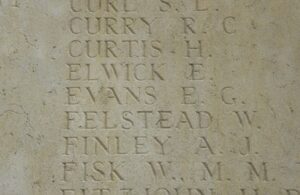
Evan Tom Evans, Seaman, Mercantile Marine. Evan was born at New Quay in 1889, the son of Mary Evans. Evan married Hannah Evans in 1909, and the couple resided with her parents at Maesgwyn, New Quay. Evan was a Tailor, but served with the Mercantile Marine, aboard the SS Lincolnshire. Evan died on 8 November 1914 at Penang Straits Settlements. No more is currently known of him, as he is not commemorated by the CWGC.
John Lloyd Evans, Second Engineer, Mercantile Marine. John was born in 1898, the son of Mary Evans, of Morfagwyn, New Quay. He served with the Mercantile Marine aboard the SS Sandsend, a West Hartlepool registered Collier. On 16 September 1917, Sandsend was on voyage from Barry to Queenstown with a cargo of coal and general cargo, when struck a mine which had been laid by the German submarine UC-48, and sunk with the loss of three lives. John was 25 years old when he died that day, and is commemorated on the Tower Hill Memorial, London.
Josiah Raymond Evans, Master, Merchant Navy. Josiah is named on the WW1 section of the memorial hall plaque, but should be on the WW2 section. He was born on 20 June 1892, the son of Francis and Sarah Evans, of Arba, New Quay. He actually survived the Great War, and served again during WW2 with the Merchant Navy, as Master of the S.S. Coryton, a Cardiff registered steamer. Josiah was married to Frances M. Evans, of Llandrindod Wells. On 17 February 1941, Coryton was steaming off the north east coast, after having left an Atlantic Convoy to head south for Hull. She had not long left the safety of the convoy when she was attacked by German aeroplanes, which machine-gunned the ship. Josiah decided to run the stricken ship aground in Budle Bay, and ordered his crew to take to the lifeboats. He remained aboard the ship, but she broke up when a storm broke out later in the day, and Josiah was drowned. His body was recovered from the sea on the following day, after having washed ashore. Josiah was 48 years old, and was brought back to Wales for burial in St. Mary’s Churchyard, Builth Wells.
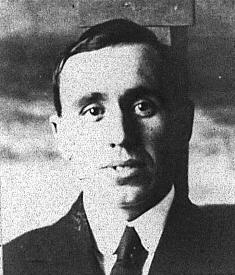
T. G. Evans. This man is named on the memorial hall only, and the memorial shows that he resided at Towyn Point, New Quay
William Evans, Second Mate, Mercantile Marine. William was the son of David and Jane Evans, of Llanllwchaiarn. Prior to the war he resided with his wife, Alice Kate Evans (nee Patrick), at Tan-y-Bryn, New Quay. William served with the Mercantile Marine, aboard the SS Inniscarra, a Cork registered passenger steamer. On 12 May 1918, she was on route from Fishguard for Cork, when she was torpedoed and sunk by the German submarine U-86, with the loss of 37 lives. William was 54 years old when he died that day, and he is commemorated on the Tower Hill Memorial, London.
George Fowler, MM, Bombardier, 73984, Royal Field Artillery. George was had resided at Tower Hill, New Quay for several years prior to moving to Haverfordwest. He enlisted there into the Royal Artillery, and was posted to France on 29 July 1915, attached to D Battery, 235th Brigade, Royal Field Artillery, which was attached to the 47th (2nd London) Division. The Division fought at the Battle of Aubers, and the Battle of Festubert during May 1915 and in September fought at the Battle of Loos. They were north of Arras when the Germans attacked Vimy Ridge, and then moved south, taking part in the Battle of the Somme. Early in 1917 the Division moved north to Belgium, and took part in the Battle of Messines, and then in November 1917 fought at the Battle of Cambrai. In March 1918 the Division were situated near St. Quentin, and faced the German Spring Offensive here on 21 March, fighting at the Battle of St Quentin. George was killed in action during terrible fighting on 27 March 1918, and he is commemorated on the Arras Memorial, France. George was awarded the Military Medal during his time at war.
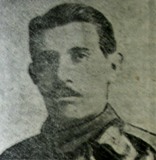
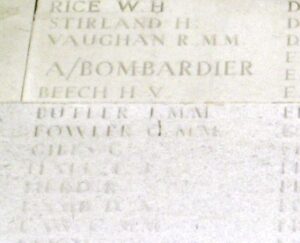
David George Griffith, MC, Lieutenant, Royal Field Artillery. David was the son of George and Jane Griffiths, of Llangranog. The family had moved to Baker’s Farm, Ticehurst, Sussex during the war, but David had enlisted into the Royal Navy by around 1908. After completing 8 years at sea, David was commissioned into the Royal Artillery, and was posted to France, where he joined the 84th Brigade, Royal Field Artillery, which was attached to the 18th (Eastern) Division. David was awarded the Military Cross for gallantry during the German Spring Offensive of 21 March 1918. The citation was published in the London Gazette of 23 April 1918, and read; ‘ For conspicuous gallantry and devotion to duty when in charge of the battery while it was firing the final protective barrage. When the enemy shelled the position, exploding some ammunition and setting the camouflage of the gun-pit on fire he superintended the extinguishing of the fire and so saved the gun and ammunition. He did excellent work on several other occasions.’ David was wounded during this action, and returned home, dying as a result of injuries suffered during the war, on 17 December 1918, aged 28. David is buried at Llangranog (St. David) Churchyard. The Memorial Hall Memorial shows him as serving with the Royal Navy, but he had been in the army for a year when he died.
Enoch Lewis James, Second Lieutenant, Royal Welsh Fusiliers. Enoch was the son of Evan and Mary James, of Omia Villa, New Quay. He served in the OTC prior to being commissioned into the Royal Welsh Fusiliers on 21 November 1916. Enoch was posted to France, joining the 14th Battalion, Royal Welsh Fusiliers, which was attached to 113 Brigade, 38th (Welsh) Division. He joined the battalion at Ypres, where it was stationed alongside the Canal Bank at Boesinghe, north of the city. On the night of 17/18 February 1917, Enoch was sent out with a raiding party, which was intending to creep across No Man’s Land and bomb the German trenches opposite. The party was caught up in fierce fighting, and on its return, Enoch was found to be missing. A Sergeant reported that he and Enoch were among the last to return to their lines, when they were caught by a German hand grenade. Enoch was later officially reported as having been killed in action on 18 February 1917. He was 27 years old, and is commemorated on the Ypres (Menin Gate) Memorial, Belgium.

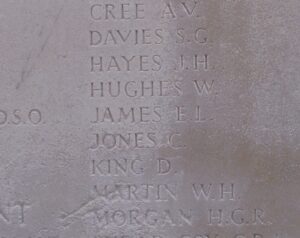
Thomas Arthur James, Private, 532667, London Regiment. Thomas was the son of Capt. David and Anne James, of 6, Lewis Terrace, New Quay. He resided at Kensington prior to the war, and enlisted there into the 15th Battalion, London Regiment (Civil Service Rifles), which was attached to 140 Brigade, 47th (2nd London) Division. Thomas joined the battalion in France early in 1916. The Division was north of Arras when the Germans attacked Vimy Ridge, and then moved south to the Somme, where they fought at the Battle of Flers-Courcelette, and then at the Battle of Le Transloy, where the Division captured Eaucourt l’Abbe, and took part in Attacks on the Butte de Warlencourt. Early in 1917 the Division moved north to Belgium, and took part in the Battle of Messines. The next major action for the Division was at Cambrai, but somehow Thomas was still at Ypres, as he was killed in action there on 5 December 1917. Thomas was 20 years old, and is buried at Bedford House Cemetery, Belgium.
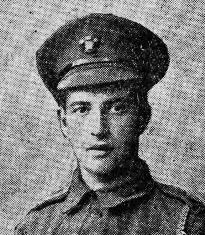
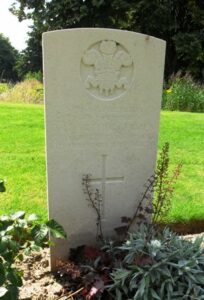
Daniel Morley Jenkins, Private, 851, Welsh Regiment. Daniel was born on 31 August 1896, the son of David and Rachel Jenkins, of Milford House, New Quay. He enlisted at Carmarthen on 12 January 1915 into the 1/4th Battalion, Welsh Regiment, which was the local Territorial Battalion, attached to 159 Brigade, 53rd (Welsh) Division. The Division landed at Cape Helles, Gallipoli, on 9 August 1915, and was immediately thrown into action, spending the next few days in isolated pockets, fighting against a Turkish counter-attack during the Battle of Sari Bair, and then at the Attack on Scimitar Hill. Daniel was wounded soon after the battalion landed on Gallipoli, whilst attempting to fetch some water for himself and some friends. He was evacuated aboard a Hospital Ship, but died at sea on the way to Alexandria on 16 August 1915. Daniel was 18 years old, and is commemorated on the Helles Memorial, Gallipoli.
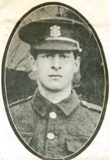
Joseph Cyril Wynne Jenkins, Private, 23353, Royal West Surrey Regiment. Joseph was born in New Quay in 1897, the son of Reverend Joseph Jenkins and Mary Jenkins. The family lived at New Quay for several years, prior to moving to Blaenau Ffestiniog, and then to Pendennis, Llandovery. Joseph enlisted at Tunbridge Wells, originally into the East Kent Regiment but later transferred into the 10th Battalion, Royal West Surrey Regiment, which was attached to 124 Brigade, 41st Division. Cyril was shot in the chest during the German Spring Offensive of 1918, and brought to Étaples to the Base Hospital, where he died of wounds on 9 April 1918, aged just 20. He is buried at Étaples Military Cemetery, France. He is not commemorated at New Quay, but at Llandovery.
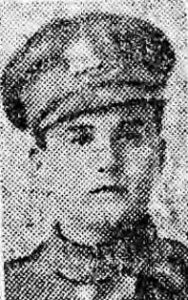
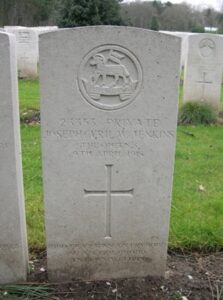
David John Jones, Boatswain (Bosun), Mercantile Marine. David was the son of Mr. and Mrs. Jones, of New Quay. Prior to the war he resided with his wife, Catherine Jones (formerly Herbert, nee Thomas), at 3, Marine Terrace, New Quay. David served with the Mercantile Marine aboard the SS Rosario, a Newport registered Merchant Steamer. On 19 August 1917, she was on route from Huelva for Troon with a cargo of pig iron, when she was torpedoed and sunk by the German submarine UC-55. David was 55 years old when he died that day, and is commemorated on the Tower Hill Memorial, London.
David Owen Jones, Seaman, Mercantile Marine. David was the son of John and Anne Jones, of 25, Rock Street, New Quay. He had served in the Mercantile Marine prior to the war, and by 1917 was serving aboard the steamship SS Relillio, which was based at Cardiff, and gave his address as 75, Monthermer Road, Cardiff. David died on 12 June 1917, aged 34. Nothing more is known of him, as he is not commemorated by the CWGC. (Thanks to Margaret Jones for finding David’s details).
Edward Jones, Gunner, 168240, Royal Field Artillery. Edward was the son of Watkin and Mary Jones, of Cilgynllefawr, New Quay. He enlisted at Cardigan into the Royal Artillery, and was posted to France in 1916 with the 23rd Battery, 40th Brigade, Royal Field Artillery, which was attached to the 3rd Infantry Division. During 1916 the Division fought at the Battle of Albert, and the Battle of Bazentin, where they captured Longueval. They then took part in the Battle of Delville Wood, and the Battle of the Ancre, before settling into another bleak winter in France. In May 1917 the Division was at Arras, and fought at the First and Second Battles of the Scarpe, and at the Battle of Arleux and the Third Battle of the Scarpe, where they captured Rouex. Edward was wounded here, and died of his wounds on 14 May 1917, aged 28. He is buried at Duisans British Cemetery, Etrun, France.
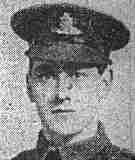
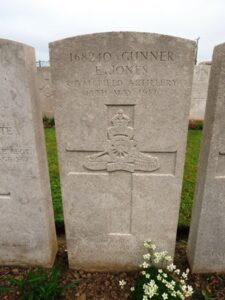
Edward Benjamin Jones, Cabin Boy, Mercantile Marine. Edward was the son of William and Mary Jones (Nee Evans), of 1, Marine Terrace, New Quay. He served with the Mercantile Marine aboard the SS Arab, a Shanghai registered steamship. On 7 January 1918, Arab was on route from Cardiff to Messina with a cargo of coal, when she was torpedoed and sunk by the German submarine UB-50. Edward was among 21 men killed when she went down. He was just 15 years old, and is commemorated on the Tower Hill Memorial, London.
Evan Jones, Private, G/27450, Queen’s Own Royal West Kent Regiment. Evan was born at New Quay, but had lived at Merthyr for many years prior to the war. He enlisted there into the Army Service Corps, and was posted to France on 15 September 1915. Evan must have been wounded in France, as he was later posted to Egypt to join the 2/4th Battalion, Queen’s Own Royal West Kent Regiment, which was attached to 160 Brigade, 53rd (Welsh) Division. Evan took part in the divisions advance into Palestine, and was killed in action during the Third Battle of Gaza on 4 November 1917. He is buried in Beersheba War Cemetery, Israel. Evan does not appear to be commemorated locally.
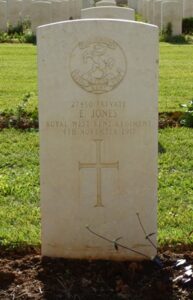
Evan Ithel Jones, Third Mate, Mercantile Marine. Evan was the son of Jenkin and Sarah Jones, of Gwynfor, New Quay. He served with the Mercantile Marine aboard the SS Astoria, a London registered steamship. On 9 October 1916, she was on route from New York to Archangelsk carrying a cargo of copper, leather and machinery, when she was captured and torpedoed by the German submarine U-46, 120 miles off Norway. Evan was among 17 of her crew killed that day. He was 21 years old, and is commemorated on the Tower Hill Memorial, London.
Thomas Evans Jones, Private, 1038, West Yorkshire Regiment. Thomas was the son of Jenken and Kate Jones, of Garsey View, New Quay. He had served with the South Wales Borderers prior to the war, before becoming a Bank Clerk, and enlisted at Leeds on 24 September 1914 into the Leeds Battalion, West Yorkshire Regiment. On 6 December 1915 Thomas arrived in Egypt, attached to the 15th Battalion, West Yorkshire Regiment, which was attached to 93 Brigade, 31st Division. In March 1916, the Division moved to France, and took part in the Battle of the Somme. During 1917 the Division took part in the Third Battle of the Scarpe, and helped in the capture of Oppy Wood. At the beginning of 1918 the Division was hit by the German Spring Offensive of 21 March 1918 at the Battle of St Quentin, and after suffering terrible casualties during the retreat, was moved to Flanders to rest. However, in April the Germans launched an offensive in Flanders, and the Division was again caught up in heavy fighting. In August 1918 the war turned in favour of the Allies, and the Division took part in the Advance in Flanders. Thomas survived the war, but had contracted tuberculosis during the course of his four years overseas, and returned home for treatment. He died on 2 February 1921, aged 33, and is buried at Llanllwchaiarn Churchyard.
Thomas Phillips Jones, Private, 27511, South Wales Borderers. Thomas was the son of Evan and Eleanor Jones, of Wellington, New Quay. Prior to the war, he resided with his wife, Ellen C. Jones, at Delfan, 16, Marine Terrace, New Quay. He enlisted at Lampeter into the army, and in 1916 was posted to the 4th Battalion, South Wales Borderers, which was attached to 40 Brigade, 13th (Western) Division. On 12 February 1916 the Division began to move to Mesopotamia, to strengthen the force being assembled for the relief of the besieged garrison at Kut al Amara. By 27 March, the Division had assembled near Sheikh Saad and came under orders of the Tigris Corps, and then took part in the attempts to relieve Kut. The Division then fought at the Battle of Kut al Amara, then at the capture of the Hai Salient and the capture of Dahra Bend. They took part in the passage of the Diyala, in the pursuit of the enemy towards Baghdad. Thomas died in Mesopotamia on 20 November 1916. He was 35 years old, and is buried at Basra War Cemetery, Iraq.
Thomas Morrison, Able Seaman, Mercantile Marine. Thomas was the son of the late John and Margaret Morrison of Dublin. Prior to the war he resided with his wife, Mary Anne Morrison (nee Jones), at 6, High Terrace, New Quay. Thomas served with the Mercantile Marine, aboard the SS Duckbridge, a Newcastle registered Merchant. On 22 February 1916, she was on route with Welsh steamcoal for the British fleet from Cardiff to the Orkneys, when she struck a mine and sunk, 6 miles from Straithie Point. Thomas was 57 years old when he died that day, and is commemorated on the Tower Hill Memorial, London.
Thomas Lewis Nicholas, Second Mate, Mercantile Marine. Thomas was born at Grey Abbey, Balligan, Co. Down, the son of Thomas Lewis Nicholas and Margaret Lewis Nicholas (nee Johnston). The family later resided at Marine Terrace, New Quay, and later at Caedelyn, Mount Pleasant, Swansea. Thomas served with the Mercantile Marine aboard the SS Beatrice, a London registered steamer, owned by Cleeves Western Collieries. On 20 July 1917, Beatrice was on voyage from Penarth to Honfleur with a cargo of coal, when she was torpedoed and sunk by the German submarine UC-47, ten miles off the Lizard, with the loss of eleven lives. Thomas was 26 years old when he died that day, and is commemorated on the Tower Hill Memorial, London.
Daniel Owen, Captain, Mercantile Marine. Daniel was the son of John and Annie Owen. He married Annie James in 1899, and the couple lived at Talywerydd, New Quay. David is reported to have been captured by the Germans when his ship was torpedoed in January 1918, and died aboard the submarine as a PoW. He was 43 years old, and is not commemorated by the CWGC. Annie also lost her brother, Lieutenant Enoch Lewis James, who was killed on 18 February 1917.
Charles Guy Patrick, Third Engineer, Mercantile Marine. Charles was born on 8 August 1882, the son of John and Helen Patrick, of the Black Lion Hotel, New Quay. He served with the Mercantile Marine aboard the SS Camellia, a North Shields registered Steamship. Camellia was posted as missing after sailing from Dakar on 27 November 1917 for the United Kingdom. She was presumed to have been torpedoed and sunk by a U-boat on 27 November 1917. Charles was 35 years old when he died, and is commemorated on the Tower Hill Memorial, London.
David Henry Phillips, First Mate, Mercantile Marine. David was born on 15 June 1880, the son of David and Jane Phillips, and was the husband of Catherine Maelota Phillips, of Minfor, New Quay. He had joined the Mercantile Marine as a young man and served continuously up to and throughout the war. Very little else is presently known of him, but he died on 24 May 1923, aged 42, allegedly as a result of wounds suffered during the war. He is not eligible for commemoration by the CWGC as his death was past the official cut-off date.
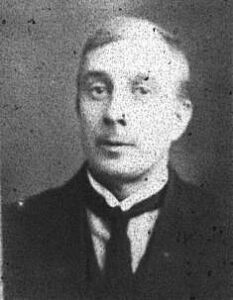
Evan Thomas Rees, Second Mate, Mercantile Marine. Evan was born at Tonypandy in 1900, the son of Thomas and Mary Rees. Thomas was from New Quay, and was working in the valleys as a Coalminer, but by 1911 had moved the family back to New Quay, after Mary had died. Evan served with the Mercantile Marine aboard the SS Gibel Hamam, a Gibraltar registered cargo ship. On 14 September 1918, she was on voyage from Swansea to France with a cargo of coal, when she was sunk by the German submarine UB-104. Evan was one of 21 men lost aboard her that day. He was 19 years old, and is commemorated on the Tower Hill Memorial, London.
John Rees, First Mate, Mercantile Marine. John was the son of James and Jane Rees, of New Quay. Prior to the war he resided with his wife, Mary Lloyd Rees (nee Evans), at 20 Hill Street, New Quay. John served with the Mercantile Marine aboard the SS Beatrice, a London registered collier. On 20 July 1917, Beatrice was on voyage from Penarth to Honfleur with a cargo of coal, when she was torpedoed and sunk by the German submarine UC-47, with the loss of 11 lives. John was among the dead. He was 63 years old, and is commemorated on the Tower Hill Memorial, London.
John James Rees, Private, 322, Welsh Horse Yeomanry. John was born in 1885, the son of Isaac and Margaret Rees, of 1, Castle Street, New Quay. He worked as a coalminer prior to the war, and resided at 13, Davies Street, Abercrave after having served in the Boer War of 1899-1901. He enlisted at Cardiff at the outbreak of war into the 1/1st Battalion, Welsh Horse Yeomanry under the name Rhys Rees. The battalion was raised as a Welsh Cavalry unit, attached to the 1st Eastern Mounted Brigade, 1st Mounted Division. In September 1915, the Welsh Horse were dismounted and sent to the Dardanelles, landing at ANZAC on 8 October 1915. The Welsh Horse was then used as a mining battalion, becoming attached to the 54th (East Anglian) Division, and carried out mining operations at Hill 60. John was killed in action at Anzac, Gallipoli on 20 November 1915. He was 30 years old, and is commemorated on the Helles Memorial, Gallipoli. The War Memorials at New Quay name him as John James Rees, and the family grave at Maenygroes also commemorated John James Rees, but military records show that he served as Rhys Rees. The soldiers effects papers of Rhys Rees state that his next of kin was his mother Margaret, and SDGW states that he was born in New Quay, so it is definitely the same man, but why he enlisted as Rhys Rees is a mystery?
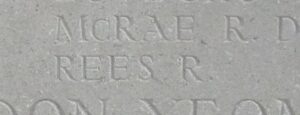
Rachel Elizabeth Rees, Nurse, Voluntary Aid Detachment. Rachel, known to her family as Ryda, was born in New Quay in 1890, the daughter of Captain David and Mrs Mary Anne Rees, of Park Hill. At the outbreak of the war she volunteered to work as a nurse at the 3rd Western Hospital, Newport, Monmouth. Ryda worked there for most of the war but to the detriment of her health. She became ill and returned home, but died in New Quay on 16 November 1919, aged 29. She was buried in Llanllwchaiarn (St. Llwchaiarn) Churchyard. Ryda is not commemorated on the New Quay memorial.
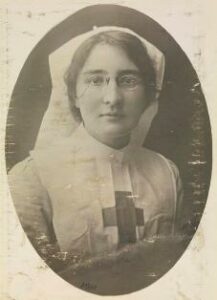
Thomas Ewart Richards, Private, 73800, Royal Welsh Fusiliers. Thomas was the son of Josiah and Mary Sarah Richards, of New Quay. He enlisted at Brecon into the army, and early in 1918 was posted to France, where he joined D Company, 2nd Battalion, Royal Welsh Fusiliers. In February 1918 the battalion was transferred to 115 Brigade, 38th (Welsh) Division, and at the end of March moved from the Armentieres sector to the Somme, taking up positions north of Albert, along Bouzincourt Ridge. Apart from some smaller actions to regain some high ground, and to consolidate the positions inside Aveluy Wood, the Division saw no major action until 21 August 1918, when it crossed the flooded River Ancre, and commenced their epic drive across the old Somme battlefield towards the mighty Hindenburg Line. Thomas was probably wounded during the advance towards Thiepval Ridge, and evacuated to the 3rd Canadian Casualty Clearing Station at Varennes, where he died of his wounds on 4 September 1918. He was 19 years old, and is buried at Varennes Military Cemetery, France.
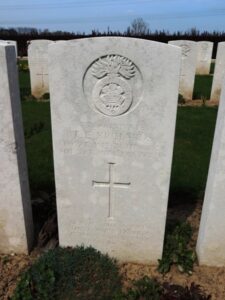
Francis Stephens, Boatswain (Bosun), Mercantile Marine. Francis was the son of James and Mary Stephens, of Wexford, and the husband of Mrs. Margaret O’Flaherty (formerly Stephens), of 88, Old Hall Street, Liverpool. He served with the Mercantile Marine aboard the SS Memphian, a Liverpool registered steamer. On 8 October 1917, Memphian was on voyage from Liverpool to New Orleans, when she was torpedoed and sunk by the German submarine U-96, 7 miles from the North Arklow lightvessel. Thirty-two men were lost in the sinking, including Francis. Some weeks after the sinking, the bodies of two unknown sailors were washed ashore in a boat at New Quay, and buried at St. Llwchaiarn Churchyard. One was later identified as that of Francis Stephens, who was 48 years old when he drowned. Many thanks to Mike Berrell for the photograph.
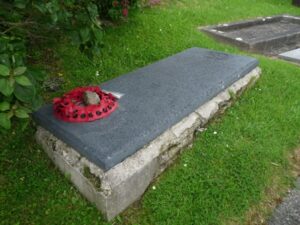
Evan Lewis Thomas, First Mate, Mercantile Marine. Evan was the son of Thomas Thomas, and Ann Thomas, of New Quay. Prior to the war he resided with his wife, Helen Harriett Thomas (nee Phillips), at 1, Bute Esplanade, Cardiff. Evan served with the Mercantile Marine, aboard the SS Excellence Pleske, a London registered steamship. On 31 March 1918, Excellence Pleske was torpedoed and sunk by a German U-boat, off Dungeness. Thirteen of her crew were killed, including Evan, who was 32 years old. He is commemorated on the Tower Hill Memorial, London.
James Parry Thomas, First Mate, Mercantile Marine. James was the son of James Thomas and Mary Thomas (nee Parry), of Louvain, New Quay. He served with the Mercantile Marine, aboard the SS Lux, London registered tanker. On 5 February 1917, Lux was on voyage from New York to Calais with a cargo of petroleum, when she was was sunk by the German submarine U-60. James was amongst 29 men lost aboard her. He was 43 years old, and is commemorated on the Tower Hill Memorial, London. An obituary stated that his body had been found at sea on 8 February 1917, and that is the date of his death which is shown by the CWGC.
Albert Sydney Watson, Third Engineer, Mercantile Marine. Albert was the son of John and Alice Watson of Islington, London. Prior to the war he resided with his wife, Margaret Sarah Watson (nee Phillips), at 2, Frances Road, New Quay. He served with the Mercantile Marine aboard the SS Joseph Chamberlain, a West Hartlepool registered Merchant steamer. On 18 September 1917, she was on route from Archangel for Lerwick when she was torpedoed and sunk by the German submarine UB-62, 50 miles off Muckle Flugga, Shetland Isles. Albert was amongst 18 men lost in the sinking. He was 39 years old, and is commemorated on the Tower Hill Memorial, London.
William Leslie Mansell Webb, Seaman, Mercantile Marine. William was born at Gloucester in 1886, the son of William John Webb and Kate Louisa Webb. Prior to 1901, his father had become widowed, and had remarried Rachel Marietta Griffiths, of New Quay in 1902, the family living at 14, High Terrace, New Quay. William served with the Mercantile Marine prior to the war. Little else is presently known of William, as he is not commemorated by the CWGC, but he died in the Persian Gulf on 7 April 1915.
Jenkin Arthur Pritchard Williams, Master Mariner, Mercantile Marine. Jenkyn was born on 17 September 1888, the son of John and Mary Anne Williams (nee Phillips), of Hazeldene, New Quay. He married Mary Davies at Cardiff on 12 July 1915, and served with the Mercantile Marine aboard the SS Kildonan, a Cardiff registered Merchant steamer. On 29 September 1917, she was two miles off the Pendeen Lighthouse, Cornwall, when she was torpedoed and sunk by the German Submarine UB-35, with the loss of 14 lives. Jenkin was 28 years old, and is commemorated on the Tower Hill Memorial, London.
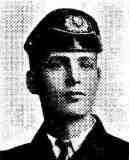
John Benjamin Williams, Third Mate, Mercantile Marine. John was the son of David and Elizabeth Williams, of Arba, New Quay. Both John and his brother Thomas served at sea with the Mercantile Marine. During the war John was serving aboard the tramp steamer S.S. Normandier. He died of Blackwater Fever, a plaque which struck the entire ships crew, while on voyage from Dakar to New Orleans on 15 November 1918, aged 20, and was buried at sea. With the crew all ill, the ship also lost her engines and the survivors were rescued by the US Navy. John is not eligible for commemoration by the CWGC as he was not a casualty of war. His parents later resided at Brynwig, New Quay.
John Williams, Private, 42196, Suffolk Regiment. John was the son of John and Catherine Williams, of Brynberllan, Rhosmaen, Llandeilo. He had worked at the National and Provincial Bank at New Quay early in the war, but enlisted in 1917 into the Training Reserve. He was posted from there to the 12th Battalion, Suffolk Regiment, which was attached to 121 Brigade, 40th (Bantam) Division. The division had been in France since June 1916, and had fought on the Somme that year. It followed the German withdrawal to the Hindenburg Line in March 1917 and later that year fought at the Battle of Cambrai, where the division helped capture Bourlon Wood. After remaining in the area for the winter, the division was caught up in the Battle of St. Quentin, the German Spring Offensive, which began on 21 March 1918, and after suffering terrible casualties, was pushed back past Bapaume towards the old Somme Battlefields of 1916. The division was withdrawn from the line, and sent to Flanders, but was caught again when the Germans attacked here on 9 April 1918. John was killed in action during the chaotic fighting that followed the dawn attack that day, and was initially reported as missing. It was some time before his parents heard news of his death after receiving a letter from a comrade, who confirmed he had been killed on 9 April 1918. The 19 years old has no known grave and is commemorated on the Ploegsteert Memorial, Belgium.
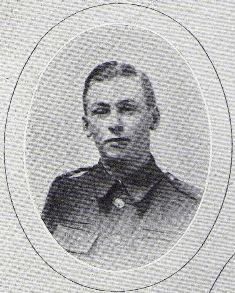
Simon Rees Williams, Private, 1419, Welsh Guards. Simon was born at Aberaeron in 1882, the son of John and Mary Williams. He resided at Cardiff prior to the war, and enlisted there into the Welsh Guards, which had been formed by Royal Warrant on 26 February 1915. On 18 August 1915 the 1st Battalion, Welsh Guards landed in France, where it was attached to 3rd Guards Brigade, Guards Division, moving to positions near Loos. The Guards Division took part in the Battle of Loos on 25 September 1915, remaining in the area during the coming months, where they also fought in the subsequent Action of Hohenzollern Redoubt. Simon was wounded in the spring of 1916, and died of his wounds in hospital at Etaples on 12 April 1916. He was 34 years old, and is buried at Etaples Military Cemetery, France. Simon does not appear to be commemorated on any local war memorial around New Quay, but is commemorated on his grandfathers grave at Nanternis Chapel and on the old Towyn Grammar School War Memorial.

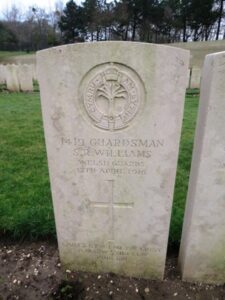
Thomas Henry Williams, Second Mate, Mercantile Marine. Thomas was born in 1894, the son of David and Elizabeth Williams, of Arba, New Quay. He served with the Mercantile Marine as Second Mate. On 17 October 1917 he was travelling as a passenger, officially classed as a Distressed British Seaman, aboard the cargo ship S.S. Manchuria when it was torpedoed and sunk in the Atlantic Ocean, some sixty miles west of Ouessant, Finistère, France by the German submarine U-53. Thomas is not classified as an official casualty of war as he was travelling as a passenger, and was not part of the crew of Manchuria.
Charles Robert Wilson, MM, Private, 267569, Monmouthshire Regiment. Charles was born in 1896, the son of Alfred Wilson. He was living at New Quay prior to the war, and enlisted at Brecon on 12 October 1914 into the Brecknock Battalion, South Wales Borderers. On 30 July 1916 he was posted to the Infantry Base Depot in France, where he was transferred to the 2nd Battalion, Monmouthshire Regiment. The battalion was the Pioneer Battalion to the 29th Division. In 1916 it fought at the Somme, at the Battles of Albert and Le Transloy, suffering heavy casualties. In the Spring of 1917 the Division fought at the Battle of the Scarpe, which was part of the Arras Offensive, and then moved further north to Ypres. Here they fought at the Battle of Langemarck, and then at the Battles of the Menin Road, Polygon Wood, Broodseinde and Poelcappelle. Charles was wounded at Ypres, and evacuated to 61 Casualty Clearing Station. He died there of his wounds on 23 October 1917, aged 21, and is buried at Dozinghem Military Cemetery, Belgium. Charles had been awarded the Military Medal just three months prior to his death.
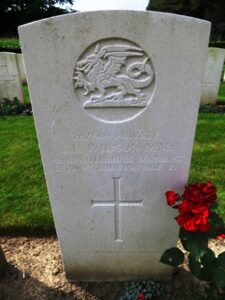
World War Two, 1939-1945
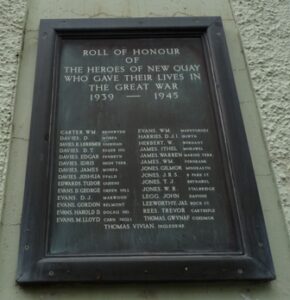
William Frank Carter, Royal Air Force Volunteer Reserve. William served during the war with the Royal Air Force. Very little is known of him at present, but he resided at Bronwydd, New Quay. William died at East Dulwich Hospital on 19 August 1946. No more information is presently known of him, as he is not commemorated by the CWGC.
David James Davies, Sailor, Merchant Navy. David was the son of James Davies, and of Margaret Anne Davies, of New Quay. He served with his father James in the Merchant Navy, aboard the SS British Viscount, a London registered tanker. On 3 April 1941, she was on route from Curacao via Sydney to Scapa Flow, carrying a cargo of Admiralty fuel oil when she was torpedoed by the German submarine U-73, caught fire and sunk SW of Ireland. David was one of 28 men, including his father, who died aboard her hat day. He was 20 years old, and is commemorated on the Tower Hill Memorial, London.
David Lorrimer Davies, Master, Merchant Navy. David was the son of Captain David Owen Davies, and of Mrs. Davies, of New Quay. Prior to the war he resided with his wife, Elizabeth Mona Davies, at New Quay. David served with the Merchant Navy aboard the SS Justitia, a London registered steamship. David died when Justitia was lost after being torpedoed by a German submarine on 22 November 1940. He was 59 years old, and is commemorated on the Tower Hill Memorial, London.
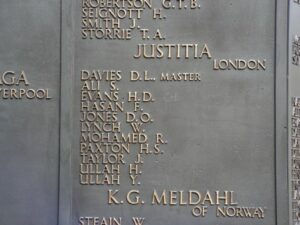
David Thomas Davies, Able Seaman, Merchant Navy. David was the son of Evan and Margaretta Davies, of New Quay. He served with the Merchant Navy aboard the SS River Lugar, a Glasgow registered steamer. On 26 June 1941, she was off Freetown when she was torpedoed and sunk by a German U-boat. David was one of 37 lives lost in the sinking that day. He was 33 years old, and is commemorated on the Tower Hill Memorial, London.
Frederick Shaylar Davies, Pilot II, 1832986, Royal Air Force Volunteer Reserve. Frederick was the son of Luke and Annie Jane Davies, of New Quay. He enlisted into the Royal Air Force towards the end of the war, becoming a Pilot with 201 Squadron, Royal Air Force, which was based at RAF Pembroke Dock, flying the Short Sunderland. Frederick married Helen Vera Finch, of New Quay, while on leave in 1946. The squadron moved to RAF Calshot, Hampshire on 1 April 1946. On 5 July 1947 Frederick was flying a Sunderland, Serial PP-113 on anti submarine exercises, and was carrying out a practise attack on HMS Sentinel when the aircraft hit the sea, killing Frederick and his crew. Frederick was 22 years old, and is commemorated on the Runnymede Memorial, Surrey. Frederick is not commemorated at New Quay.
Idris Davies, Second Officer, Merchant Navy. Idris was the son of Captain and Mrs. W. B. Davies, of New Quay. He served with the Merchant Navy aboard the SS Barberrys, a London registered cargo ship. On 26 November 1942, she was in convoy SC-110, when she was torpedoed and sunk by the German Submarine U-663, northeast of St. Johns, Newfoundland. Idris was one of 33 lives lost that day. He was 29 years old, and is commemorated on the Tower Hill Memorial, London.
James Davies, Greaser, Merchant Navy. James was the husband of Margaret Anne Davies, of New Quay. He served with his son David James Davies in the Merchant Navy, aboard the SS British Viscount, a London registered tanker. On 3 April 1941, she was on route from Curacao via Sydney to Scapa Flow, carrying a cargo of Admiralty fuel oil when she was torpedoed by the German submarine U-73, caught fire and sunk SW of Ireland. James was one of 28 men, including his son, who died aboard her hat day. He was 49 years old, and is commemorated on the Tower Hill Memorial, London.
Joshua Emlyn Davies, Greaser, Merchant Navy. Joshua was the son of Daniel and Hettie Davies, and the husband of Esther Ellen Davies, of New Quay. He served with the Merchant Navy, aboard the SS British Viscount, a London registered tanker. On 3 April 1941, she was on route from Curacao via Sydney to Scapa Flow, carrying a cargo of Admiralty fuel oil when she was torpedoed by the German submarine U-73, caught fire and sunk SW of Ireland. Joshua was one of 28 men, including three from New Quay, who died aboard her hat day. He was 28 years old, and is commemorated on the Tower Hill Memorial, London.
William James Edgar Davies, Lance Corporal, 3976140, Welch Regiment. William, known as Edgar, was the son of David James Davies and Mary Davies, of Penbryn, Hill Street, New Quay, and the husband of Winifred Davies, of Hirwaun, Glamorgan. He served with the 1st Battalion, Welch Regiment throughout the North African campaign. After the Axis forces had been defeated in Tunisia in 1943, the Allies began their liberation of Italy. Edgar was killed in Italy on 1 October 1944. He was 27 years old, and is buried in Cesena War Cemetery, Italy.

John Tudor Edwards, Quartermaster, Merchant Navy. John was the son of David Edwards, and of Rachel Edwards, of New Quay. He served with the Merchant Navy aboard the SS City of Pretoria, a London registered Cargo Steamer. On 4 March 1943, she was on route from New York for Holyhead when she was torpedoed by the German submarine U-172, and sunk. John was among 152 lives lost aboard her that day. He was 30 years old, and is commemorated on the Tower Hill Memorial, London.
David George Evans, Master, Merchant Navy. David was the son of David and Margaret Evans, and the husband of Hetty Dorothy Evans, of New Quay. He served with the Merchant Navy aboard the SS Start Point, a Newcastle-on-Tyne registered Cargo Steamer. On 10 November 1942, she was on route from Barry via Milford Haven for Freetown, carrying a cargo of coal, when she was torpedoed and sunk by the German submarine U-128. David was one of 2 men killed aboard her that day. He was 49 years old, and is commemorated on the Tower Hill Memorial, London.
David John Evans, Second Mate, Merchant Navy. David was born in Six Bells, Abertillery on 27 February 1904, the son of David and Margaret Jane Evans. By 1911 the family was living in Marwood, New Quay, where his father worked as a Mariner. David followed in his footsteps and went to sea, passing his Second Mate certificate on 4 March 1927. He married Elsie Mary Jones of Pant, Llangrannog prior to the war. By 1944 he was serving aboard the S.S. Fort Senneville. He became ill with smallpox while at sea and died in hospital at Mogadishu on 29 April 1944, aged 39. He was originally buried in Mogadishu, but his grave was later removed to Nairobi Ngong Cemetry, Kenya. David was not a casualty of war so is not commemorated by the CWGC.
David Gordon Evans, Third Officer, Merchant Navy. David lived at Belmont, New Quay. He served with the Merchant Navy, aboard the SS Ciscar, a London registered steamer. On 19 August 1941, Ciscar was on voyage from Bristol to Gibraltar when she was torpedoed and sunk by the German submarine U-201, with the loss of 13 lives. David was 26 years old, and is commemorated on the Tower Hill Memorial, London.
Harold David Evans, Fifth Engineer Officer, Merchant Navy. Harold was born at New Quay, the son of Dudley and Mary Evans. The family later resided at Llandeilo. Harold served with the Merchant Navy aboard the SS Justitia, a London registered steamship. Harold died when Justitia was lost after being torpedoed by a German submarine on 22 November 1940. He was 39 years old, and is commemorated on the Tower Hill Memorial, London.
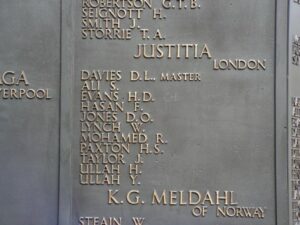
Josiah Raymond Evans, Master, Merchant Navy. Josiah is named on the WW1 section of the memorial hall plaque, but should be on the WW2 section. He was born on 20 June 1892, the son of Francis and Sarah Evans, of Arba, New Quay. He actually survived the Great War, and served again during WW2 with the Merchant Navy, as Master of the S.S. Coryton, a Cardiff registered steamer. Josiah was married to Frances M. Evans, of Llandrindod Wells. On 17 February 1941, Coryton was steaming off the north east coast, after having left an Atlantic Convoy to head south for Hull. She had not long left the safety of the convoy when she was attacked by German aeroplanes, which machine-gunned the ship. Josiah decided to run the stricken ship aground in Budle Bay, and ordered his crew to take to the lifeboats. He remained aboard the ship, but she broke up when a storm broke out later in the day, and Josiah was drowned. His body was recovered from the sea on the following day, after having washed ashore. Josiah was 48 years old, and was brought back to Wales for burial in St. Mary’s Churchyard, Builth Wells.
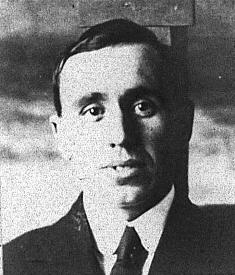
Morgan Lloyd Evans, Master, Merchant Navy. Morgan was the Husband of Elizabeth Evans, of New Quay. He served with the Merchant Navy aboard the SS Empire Sun, a Sunderland registered Cargo Steamer, which was armed with a catapult mounted aircraft. On 7 February 1942, she was torpedoed and sunk by the German submarine U-751. Morgan was 50 years old, and is commemorated on the Tower Hill Memorial, London.
William Joshua Evans, Ordinary Seaman, Merchant Navy. William was the son of Joshua and Anne Evans, of New Quay. He served with the Merchant Navy aboard the S.S. British Viscount, a London registered tanker. On 3 April 1941, British Viscount was on route from Curacao via Sydney to Scapa Flow carrying a cargo of Admiralty fuel oil when she was torpedoed by the German submarine U-73 and sunk off Ireland. The tanker caught fire, was abandoned and sank. William was among 28 men lost in the initial explosion. He was 23 years old and is commemorated on the Tower Hill Memorial, London. William is not commemorated at New Quay.
W. M. Evans. This man cannot presently be identified, but the memorial states that he resided at Maenygroes, New Quay.
David John Iorwerth Harries, Chief Engineer Officer, Merchant Navy. David resided at Irlwyn, New Quay. He served with the Merchant Navy aboard the SS Llanashe, a London registered Cargo Steamer. On 17 February 1943, she was on route from New York for Port ELlizabeth, carrying a cargo of tin plate and aluminium when she was torpedoed by the German submarine U-182 and sunk. David was one of 28 men who went down with her, and he is commemorated on the Tower Hill Memorial, London.
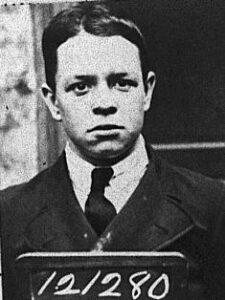
William Ewart Herbert, Master, Merchant Navy. William was the Husband of Margaret M. Herbert, of Llanon. He served with the Merchant Navy aboard the SS Stangarth, a London registered steamer. On 16 March 1942, Stangarth was on her maiden voyage, when she was hit by a torpedo from the German submarine U-504, exploded and sank northeast of San Juan, Puerto Rico. William was 47 years old when he died that day, and is commemorated on the Tower Hill Memorial, London.
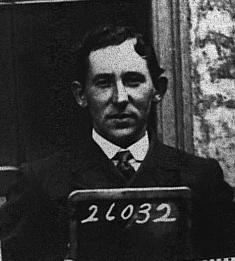
David Warren James, Master, Merchant Navy. David was the son of Captain John James and Mrs. James, of New Quay, and the husband of Sarah Morfydd James, of Pontardulais. He was a long serving Merchant Seaman, being Master of the SS Anchises (Liverpool), he had received a King’s Commendation for Brave Conduct, the leading gallantry award for Merchant Seamen. The Anchises was attacked and bombed by Focke-Wolf Condors, on 27 February 1941. Stricken, she was re-attacked by a Focke-Wolfe Condor the following day, and sunk. David went down with her on 28 February 1941. He was 50 years old, and is commemorated on the Tower Hill Memorial, London. He had also been awarded a Diploma of Honour by the Chinese Government in recognition of the gallantry displayed in rescuing six members of the crew of a Chinese junk which foundered.
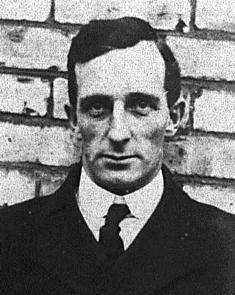
Thomas Ithel James, Sergeant, 615300, Royal Air Force. Thomas was the son of G. Clifford James and Ellen M. James, of New Quay. He served with 12 Squadron, Royal Air Force, which was a heavy bomber squadron, operating the Avro Lancaster from RAF Wickenby. Thomas was killed when his Lancaster was lost on a mission on 27 February 1943. He was 22 years old, and is commemorated on the Runnymede Memorial, Surrey.
William Phillip Williams James, Second Officer, Merchant Navy. William was the son of Evan and Nellie Dorothy James, of Fern Bank, New Quay. He served aboard the S.S. Kyleglen, a Liverpool registered cargo steamer. On 15 December 1940, Kyleglen was en-route from Oban to Sydney, Novia Scotia in ballast, when she was torpedoed and sunk by the German Submarine U-100 (Some sources say 14 December). William was 25 years old when he died that day, and is commemorated on the Tower Hill Memorial, London.
Evan Gilmour Jones, Fifth Engineer Officer, Merchant Navy. Evan was the son of John Lewis Jones and Maggie Lorenzo Jones, of New Quay. He served with the Merchant Navy aboard the MV Inverlee, a Glasgow registered tanker. On 19 October 1941, Inverlee was on route from Trinidad for Glasgow carrying a cargo of fuel oil, when she was torpedoed and sunk by the German Submarine U-204. Evan was one of 21 men lost during the sinking. He was 25 years old, and is commemorated on the Tower Hill Memorial, London.
Jack Rogers Simpson Jones, Sailor, Merchant Navy. Jack was the son of Evan and Margaretta Mary Jones, of New Quay. He served with the Merchant Navy aboard the SS Beechwood, a London registered Steamer. On 26 August 1940, she was on route from Haifa to Britain carrying a cargo of general freight and potash, when she was torpedoed and sunk by the German submarine U-130. Jack survived the sinking, but died at New Quay as a result of injuries suffered, on 15 August 1945. He was 22 years old, and is buried at New Quay New Cemetery.
Thomas James Jones, Master, Merchant Navy. Thomas was born at New Quay in about 1879 and had lived at Brynawel, New Quay. He was a long serving mariner, and by the outbreak of WW2 lived with his wife Eleanor Jones, at Port Talbot, Glamorgan. He was Master of the Glasgow registered steamship S.S. Gazcon. On 2 September 1942 Gazcon was in the Pacific when she was torpedoed and sunk by the Japanese Submarine I-29. Thomas was 61 years old when he died that day and is commemorated on the Tower Hill Memorial, London.
William Robert Jones, Third Engineer Officer, Merchant Navy. William was the son of Thomas Lewis Jones and Ellen Jane Jones, and the husband of Hannah Amelia Jones, of Llanarth. He served with the Merchant Navy aboard the SS Harmala, a London registered cargo steamer. On 7 February 1943, Harmala was on route from Rio de Janeiro via New York and Halifax to Middlesbrough, as part of Convoy SC-118, carrying a cargo of iron ore, when she was torpedoed and sunk by the German Submarine U-614. William was 33 years old when he drowned that day, and he is commemorated on the Tower Hill Memorial, London.
John Edgar Rewa Legg, Third Officer, Merchant Navy. John was born in Swansea on 13 February 1918, the son of George and Margaret Legg. He followed in his father’s footsteps and joined the Merchant Navy, and lived at Daphne, New Quay. By the outbreak of war, John was serving as Third Officer aboard the M.V. Arthur F. Corwin, a London registered motor tanker. On 13 February 1941, she in the Atlantic, south of Iceland, struggling to keep up with Convoy HX-106, when she was torpedoed and set ablaze by the German submarine U-103. She remained afloat, but was burning fiercely when the U-96 torpedoed her again, and sent her to the bottom, with the loss of 45 men. John was 23 years old when he was lost that day, and is commemorated on the Tower Hill Memorial, London.
William Thomas Lewis, Third Engineer Officer, Merchant Navy. William was the son of William Gardner Lewis, and of Jean Lewis, of New Quay. He served with the Merchant Navy aboard the M.V. Narragansett, a London registered tanker. On 25 March 1942 she was on route from Port Arthur to Halifax, with a cargo of oil, when she was struck in the stern by a torpedo from the German submarine U-105, and sank with the loss of 49 lives. William was 20 years old when he died that day, and is commemorated on the Tower Hill Memorial, London. William is not commemorated at New Quay.
James Leworthy, Chief Engineer Officer, Merchant Navy. John was the son of Jacob and Jane Leworthy, and the husband of Mary Anne Leworthy, of Rock Street, New Quay. He served with the Merchant Navy aboard the SS Parkhill, a Methil registered steam cargo vessel. On 18 November 1939, she was on route from Blyth for Kirkwall, carrying a cargo of coal, when she was torpedoed and sunk by the German submarine U-22. James was one of nine men who died during the sinking. He was 50 years old, and is commemorated on the Tower Hill Memorial, London.
John Trevor Rees, Cadet, Merchant Navy. John was the son of Evan David Rees and Eleanor Linda Rees, of New Quay. He served with the Merchant Navy aboard the SS Beaverford, a London registered cargo ship. On 5 November 1940, Beaverford was part of Convoy HX-84, when it was attacked by the German Battlecruiser Admiral Scheer. Grossly outgunned, the Convoy suffered terribly, losing its escort destroyer, HMS Jervis Bay, before Admiral Scheer turned its attention to the Convoy, sinking seven ships. Beaverford went down with all her crew of 77. John was 19 years old, and is commemorated on the Tower Hill Memorial, London.
Gwynhaf Thomas, Serjeant, 4196335, Royal Welch Fusiliers. Gwynhaf was the son of William Rees and Mary Ellen Thomas, of New Quay. He served with the 2nd Battalion, Royal Welch Fusiliers. The Battalion left the UK in February 1942 and sailed for Madagascar to capture the Naval Base of Diego Suarez, which was a French Naval Base that had been taken over by the Japanese, and garrisoned by Vichy French troops. Gwynhaf was killed during the ensuing fighting, on 6 May 1942, aged 22, and is buried at Diego Suarez War Cemetery, Madagascar.
Vivian Elias Bowen Thomas, Able Seaman, Merchant Navy. Vivian was the son of John and Sarah Elizabeth Thomas, of Ingledene, New Quay. He served with the Merchant Navy aboard the Glasgow registered salvage vessel S.S. Salviking. On 14 February 1944 Salviking was southwest of Ceylon when she was torpedoed and sunk by the German submarine U-168, with the loss of 27 lives. Vivian was 42 years old when he died that day and is commemorated on the Tower Hill Memorial, London.
